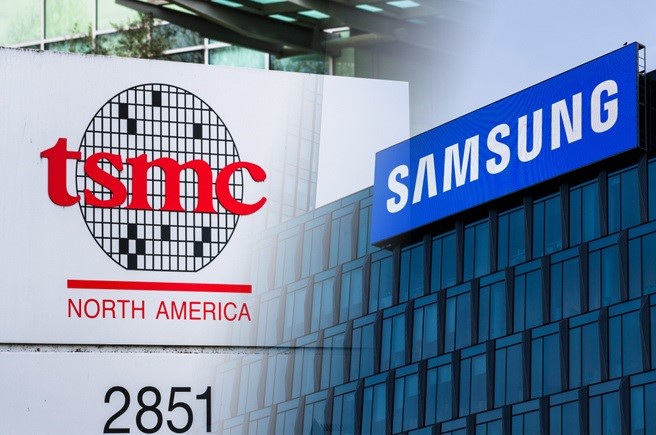Overview of the event
On March 25, 2025, technology media SamMobile broke the news that Qualcomm decided to abandon Samsung and switch to TSMC's 4nm process to exclusively manufacture the upcoming Snapdragon 8s Gen4 chip. This decision has sparked heated discussions in the industry, not only because of the failure of Qualcomm's cooperation with Samsung, but more importantly, it highlights the competitive landscape of the global semiconductor foundry market. While TSMC continues to consolidate its advantages in the high-end market, Samsung's competitiveness in advanced manufacturing processes has once again been questioned.
Snapdragon 8s Gen4 technology highlights
The Snapdragon 8s Gen4 uses the all-large-core X4+A720 architecture, and the specifications are as follows:
1. 1 × Cortex-X4 @ 3.21GHz
2. 3 × Cortex-A720 @ 3.01GHz
3. 2 × Cortex-A720 @ 2.80GHz
4. 2 × Cortex-A720 @ 2.02GHz
5. Adreno 825 GPU
6. SLC cache:6MB,L3cache:8MB
According to the test, the chip is expected to exceed 2 million points in the Antutu running score, reaching the flagship level. Such a high-performance chip has extremely strict requirements for the manufacturing process, and Qualcomm finally chose TSMC's 4nm process, showing its high recognition of TSMC's yield and stability.

Figure: Qualcomm Snapdragon 8s Gen4 chip foundry incident: Samsung lost to TSMC 4nm again
Why did Samsung lose again?
1. Samsung's 3nm GAA technology is progressing slowly
Samsung's progress on the 3nm GAA (surround gate transistor) process has not been as expected, and the yield issue has not been fully resolved, resulting in a lack of confidence in it from major customers such as Qualcomm. TSMC still adheres to the FinFET process and continues to optimize in N4P, N3E and other nodes, which is more recognized by the market.
2. The maturity of TSMC's 4nm process
TSMC's N4/N4P process is not only more stable in yield and power consumption, but also provides a better power consumption ratio, which has been proven in the past Snapdragon 8+ Gen1 (from Samsung 4nm to TSMC 4nm) case. The data shows that the energy efficiency of Qualcomm chips is increased by 30% after using TSMC technology, which is far better than Samsung's solution.
3. Supply chain and customer trust factors
Qualcomm used Samsung's 4nm foundry on products such as Snapdragon 888 and Snapdragon 8 Gen1, but due to poor power consumption and heat control, it eventually turned to TSMC. The choice of TSMC for the Snapdragon 8s Gen4 again shows that Qualcomm is more inclined to low-risk and high-stability foundries in supply chain management.
TSMC's lead
According to TrendForce data, the global foundry market share in Q4 2024:
Foundry | Market share |
TSMC | 67.1% |
Samsung | 8.1% |
It can be seen that TSMC's market dominance in high-end processes is still solid, while Samsung's share continues to be sluggish. In addition to Qualcomm, Apple, AMD, Nvidia and other manufacturers are also highly dependent on TSMC, which further consolidates TSMC's leading position in the industry.
Samsung's future opportunities and challenges
Although Samsung lags behind TSMC in advanced processes, it still has some competitive advantages:
1. The memory chip (DRAM & NAND) market still dominates
2. Advanced packaging (2.5D/3D) technology layout is leading
3. Growth of AI acceleration chips (such as HPC and NPU).
However, if Samsung wants to regain competitiveness in the high-end foundry market, it must:
1. Improve the yield of the 3nm GAA process and narrow the technology gap with TSMC.
2. Strengthen cooperation with major customers such as Qualcomm and AMD to enhance market trust.
3. Optimize supply chain management to ensure more stable mass production capacity.
Conclusion: The battle between technology, trust and market
Qualcomm Snapdragon 8s Gen4 foundry chose TSMC, reflecting that the core competition point of the current global chip foundry market is still technical stability and customer trust. TSMC continues to solidify its market dominance with its mature N4/N4P process, while Samsung's challenges in advanced processes remain severe.
In the future, the competition in the semiconductor industry will be more intense, and Samsung needs to quickly break through the technical bottleneck, otherwise it will be further marginalized in the advanced foundry market. Although TSMC is ahead, it still needs to face changes in the global supply chain and potential competition from Intel.
In this battle, Samsung lost again, but the war is still not over.






